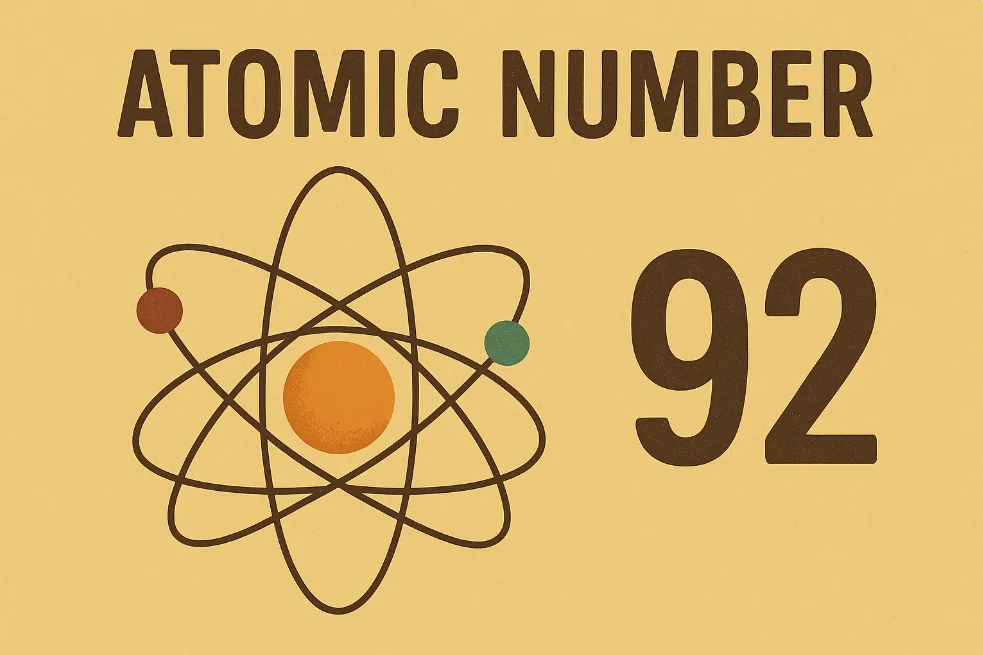Introduction
The atomic number is one of the most important ideas in chemistry and physics. It’s the number that tells us the identity of an element. In the periodic table, each element is assigned a unique atomic number, which equals the number of protons in its nucleus.
In this article, we’ll explore various examples like lithium atomic number, sodium atomic number, gold atomic number, and more. We’ll also discuss how to find atomic number, what it represents, and even the lowest atomic number for a radioactive element. By the end, you’ll have a crystal-clear understanding of this concept—whether you’re a student, teacher, or just curious about science.
Lithium Atomic Number
light, silvery metal and is the third element on the periodic table.
-
Atomic Number: 3
-
Symbol: Li
-
Protons: 3
-
Neutrons: Usually 4 in the most common isotope.
Lithium is used in rechargeable batteries, glass manufacturing, and even in certain medications for mood stabilization. The small atomic number of lithium makes it a reactive metal, quickly forming compounds with other elements.
Sodium Atomic Number
Sodium is a soft, silvery-white metal known for its reactivity.
-
Atomic Number: 11
-
Symbol: Na
-
Protons: 11
-
Neutrons: Around 12 in the most common isotope.
You’ll mostly find sodium in table salt (sodium chloride, NaCl). Its atomic number tells us why sodium belongs in Group 1 (Alkali metals) of the periodic table—it has one electron in its outer shell, making it very reactive with water.
Gold Atomic Number
Gold has fascinated humans for thousands of years due to its rarity and beauty.
-
Atomic Number: 79
-
Symbol: Au
-
Protons: 79
-
Neutrons: Usually 118 in the most common isotope.
The high atomic number of gold contributes to its density and unique physical properties, such as resistance to corrosion and oxidation. It’s also an excellent conductor of electricity, which is why it’s used in electronics.
What Does the Atomic Number Represent
The atomic number represents the number of protons in an atom’s nucleus. This number:
-
Defines the element’s identity.
-
Determines the arrangement of electrons.
-
Decides the element’s place on the periodic table.
For example:
| Element | Atomic Number | Symbol | Group |
|---|---|---|---|
| Hydrogen | 1 | H | Non-metal |
| Carbon | 6 | C | Non-metal |
| Sodium | 11 | Na | Alkali metal |
| Gold | 79 | Au | Transition metal |
Without the atomic number, we wouldn’t be able to classify elements properly.
What Radioactive Element Has the Lowest Atomic Number
The lowest atomic number for a radioactive element is Technetium (Tc) with atomic number 43, but there’s a twist:
-
Hydrogen-3 (Tritium) is radioactive and has an atomic number of 1, but it’s an isotope, not a separate element.
In the periodic table, radioactive elements often appear after atomic number 82 (lead), but there are exceptions like technetium and promethium.
Atomic Number
Potassium is a soft, reactive metal essential for human health.
-
Atomic Number: 19
-
Symbol: K
-
Protons: 19
-
Neutrons: Usually 20.
Potassium plays a key role in nerve function and muscle contractions. In plants, it’s vital for growth and photosynthesis. Its atomic number places it in the alkali metal group, sharing similar properties with sodium and lithium.
How to Find Atomic Number
Finding an atomic number is easy:
-
Check the periodic table – It’s usually the number at the top of an element’s box.
-
Count the protons – In a lab setting, measuring the number of protons will give you the atomic number.
-
Use the electron configuration – For neutral atoms, the number of electrons equals the atomic number.
Example: If an element has 8 protons, its atomic number is 8, which means it’s oxygen.
Silver Atomic Number
Silver is valued for its beauty and high conductivity.
-
Atomic Number: 47
-
Symbol: Ag
-
Protons: 47
-
Neutrons: Around 61 in its most common isotope.
Silver’s atomic number places it among the transition metals. Its high conductivity makes it useful in electronics, while its shine makes it popular in jewelry.
Atomic Number
Carbon is the basis of all known life.
-
Atomic Number: 6
-
Symbol: C
-
Protons: 6
-
Neutrons: Usually 6 in carbon-12.
Carbon forms millions of compounds, more than any other element, thanks to its ability to bond in various ways. Its atomic number ensures it’s in Group 14 of the periodic table.
FAQs
Q1: What is the atomic number in simple words?
It’s the number of protons in an atom, which decides what element it is.
Q2: Why is atomic number important?
Because it defines the chemical identity and properties of an element.
Q3: Can two elements have the same atomic number?
No, each element has a unique atomic number.
Q4: How is atomic number different from mass number?
Atomic number counts protons; mass number counts protons plus neutrons.
Q5: Which element has atomic number 1?
Hydrogen.
Q6: Is atomic number the same as electron number?
Yes, in neutral atoms, protons = electrons = atomic number.
Conclusion
The atomic number is more than just a number—it’s the foundation of the periodic table and the identity card of every element. From lithium atomic number (3) to gold atomic number (79), each tells a story about the element’s structure, properties, and behavior.
Whether you’re studying science for exams, working in chemistry, or simply curious, knowing the atomic number helps you understand the building blocks of our universe. So next time you look at the periodic table, remember—behind each number lies a world of chemistry waiting to be explored.
Also Visit: Verizon Support Number


